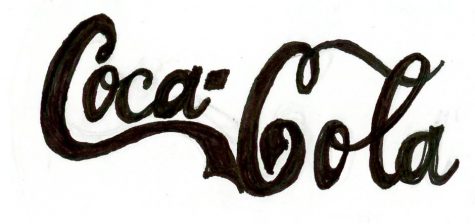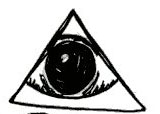What do you believe?
Students share, explain their conspiracy theory beliefs
More stories from Kaete Schmidt
Conspiracy theories have been around for years. According to the National Center for Biotechnology Information, the first known spike in the belief of conspiracy theories occurred previous to the 1900s. Initially conspiracies were very rare and not typically acknowledged. In fact, conspirators were often shunned and looked down upon in their community. However, there has been a gradual shift in thinking and beliefs.

Now, in today’s society conspiracy theories have become popular among many people. People are able to hear about many different conspiracy theories surrounding everything from the moon landing, to why certain products are made the way they are. These ideas are spread using YouTube, celebrity endorsements and social media. Many people find themselves believing, or at least considering, the ideas behind some conspiracy theories after watching videos and hearing the evidence. According to psychologytoday.com, more than 50 percent of Americans believe in at least one conspiracy theory.

Among the cognitive biases, Van Prooijen and other psychologists believe that three other concepts contribute to the appeal of conspiracy theories: 1.) Confirmation bias which is people’s willingness to accept explanations that fit what they already believe. 2.) Proportionality bias which is the inclination to believe that big events must have big causes. 3.) The Illusory pattern perception which is the tendency to see causal relations where there may not be any.
Conspirators seemed to emerge following John F. Kennedy’s assassination in 1963. This sparked many different ideas and beliefs surrounding multiple different events and people around the world. Examples of well-known conspiracy theories include global warming, Sept. 11, 2001 and suspicions surrounding members of the Illuminati.
While the majority of people agree and or disagree with pre-existing conspiracy theories, there are also people who come up with their own theories, including students at NHS.
Senior, Aliah Ledesma: Chemtrails
“The first time that it was brought to my attention was through an interview from Prince on this show that my dad always watched over and over again because he was in disbelief that Prince was on the air talking about the snow. If you look into the sky, you’ll usually see all those lines and my theory is that it is used to make people sick so the medicine companies can benefit off of that. If people aren’t constantly getting sick then they’re obviously not going to be making any money because people aren’t going to be buying products.”
According to the Keith Group from Harvard, chemtrails refers to the theory that governments or other parties are engaged in a secret program to add toxic chemicals to the atmosphere from aircraft in a way that forms visible plumes in the sky, similar to contrails. There are various reasons people believe this including sterilization, mind control, weather control, and sickness to increase the business in the pharmaceutical industry. NASA scientists found that between 1975 and 1994, there was an increase in temperature of the United States that corresponded with the increase in the amount of contrails.
Freshman, Diego Aguilar: Coca-Cola
“Before New coke, regular Coke was made using cane sugar and after that it was made using corn syrup. So, I believe, that in between the change they made New Coke on purpose so people would be angry about that and then when they switched Coca Cola back they wouldn’t notice that it was using corn syrup. To make things cheaper for them they decided to switch to corn syrup instead. But, they knew people were going to notice the change, so instead they changed everything all at once, like the flavor, can, everything so that nobody would get mad about the sugar change. When they changed it back, they kept the corn syrup the same so consumers wouldn’t notice.”
By 1985, Coca-Cola had been losing market share to diet soft drinks and non-cola beverages for many years. Consumers who were purchasing regular colas seemed to prefer the sweeter taste of rival Pepsi-Cola, as Coca-Cola learned in conducting blind taste tests. The company produced the “New Coke” to gain the love of consumers, however, the American publics reaction to the change was negative, even hostile, and the “New Coke” was considered a major failure. The company reintroduced Coke’s original formula within three months of New Coke’s debut, rebranded as “Coca-Cola Classic”, and this resulted in increased sales. This led to speculation by some that the introduction of the New Coke formula was just a marketing ploy to stimulate sales of original Coca-Cola.
Senior, Milo Jones: Pharmaceutical Industry
“The Pharmaceutical industry is pretty sketchy. It is well documented that the current opioid epidemic has been filled by the pharma companies who pushed doctors to overprescribe pain killers. They did this for one simple reason, profits. Pharmaceutical companies make their business off of treating the unhealthy. So the main conspiracies surrounding big pharma make the claim that cures for diseases that kill a lot of people like cancer and AIDS have been discovered and then destroyed or covered up by the pharmaceutical industry. Yes these

companies could make a pretty penny selling cures, but they could make significantly more money by treating symptoms.”
Conspirators believe that the pharmaceutical industry is trying to suck every penny out of the pockets of the sick, injured and dying. They also believe that they are inventing new diseases so that people will have to buy more drugs. Some other beliefs surrounding the pharmaceutical industry includes censoring alternative treatments that would be cheaper or more effective, rather than patenting and industrializing them. Lastly, some believe that they are simply renaming old illnesses so people will think their conditions are more serious, making them more willing to pay higher prices for prescriptions. According to rationalwiki.org, since 2010 there have been more overdoses resulting in death in the United States from prescription opioid pharmaceuticals than heroin and other street narcotics.

